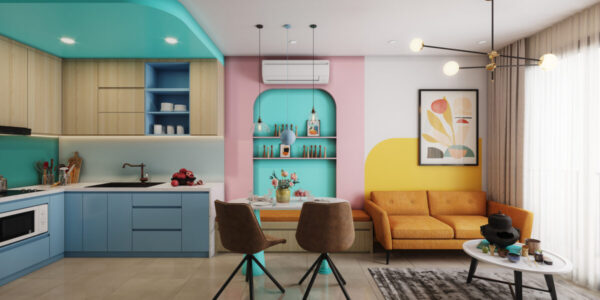
How to Design a Waterfront Garden

When garden designer Tish Treherne moved into a 1920s beach cottage turned chic ranch house on Bainbridge Island, Washington, she was especially excited about the western-facing front yard. Sunny and situated a mere 120 feet from the waters of Puget Sound, the space was planted with a lawn at the time, but Treherne knew it had far more interesting potential.
But first, she watched. Unlike her projects for clients, Treherne wasn’t up against a deadline with her own yard. “I had the luxury of waiting, to watch the landscape through the seasons,” she says. After nine months, she was ready to put a plan in motion.
In the front yard, Treherne combined tall grasses with perennials to create privacy, including tufts of grassy-looking orange-streaked Anemanthele lessoniana; ‘Walker’s Low’ nepeta for purple contrast; clumps of Santa Barbara daisies, which die down in winter and reseed themselves; and feather reed grass (Calamagrostis x acutiflora ‘Karl Foerster’). The plants can also handle being occasionally run over by her two dogs.
In the front yard, Treherne combined tall grasses with perennials to create privacy, including tufts of grassy-looking orange-streaked Anemanthele lessoniana; ‘Walker’s Low’ nepeta for purple contrast; clumps of Santa Barbara daisies, which die down in winter and reseed themselves; and feather reed grass (Calamagrostis x acutiflora ‘Karl Foerster’). The plants can also handle being occasionally run over by her two dogs.
The free-flowing design that emerged fits right in with the waterfront setting. “Not all the gardens I design for clients are as natural-looking, but in my own garden I prefer things to be slightly wild,” says Treherne.
The wild and loose theme continues along the side of the house and in the backyard, where Treherne lined gravel paths with deep purple spikes of Salvia nemorosa ‘Caradonna’ and yellow ‘Moonshine’ yarrow.
The free-flowing design that emerged fits right in with the waterfront setting. “Not all the gardens I design for clients are as natural-looking, but in my own garden I prefer things to be slightly wild,” says Treherne.
The wild and loose theme continues along the side of the house and in the backyard, where Treherne lined gravel paths with deep purple spikes of Salvia nemorosa ‘Caradonna’ and yellow ‘Moonshine’ yarrow.
Treherne replaced the front lawn with a mix of purple, orange, and green plants—a soft palette that doesn’t take away from the blue waters of Puget Sound.
Four years after moving in, Treherne says she and her husband are still basking in the light. “Moving here was a game changer for us.” Even on the darkest days, she says the plants bring much-needed cheer: “You feel like there’s sun in the landscape even when you haven’t seen it for weeks.”
Treherne replaced the front lawn with a mix of purple, orange, and green plants—a soft palette that doesn’t take away from the blue waters of Puget Sound.
Four years after moving in, Treherne says she and her husband are still basking in the light. “Moving here was a game changer for us.” Even on the darkest days, she says the plants bring much-needed cheer: “You feel like there’s sun in the landscape even when you haven’t seen it for weeks.”
